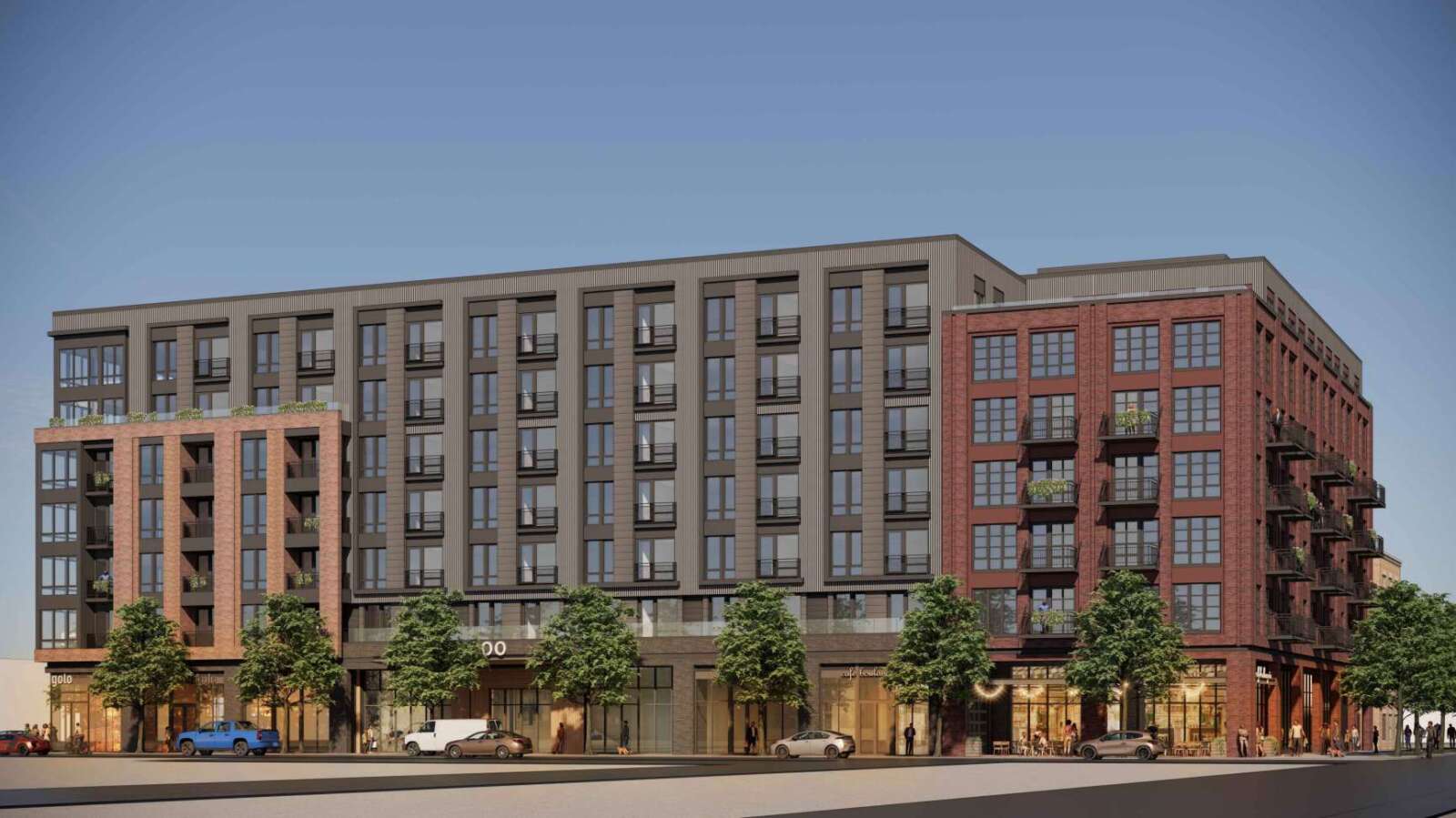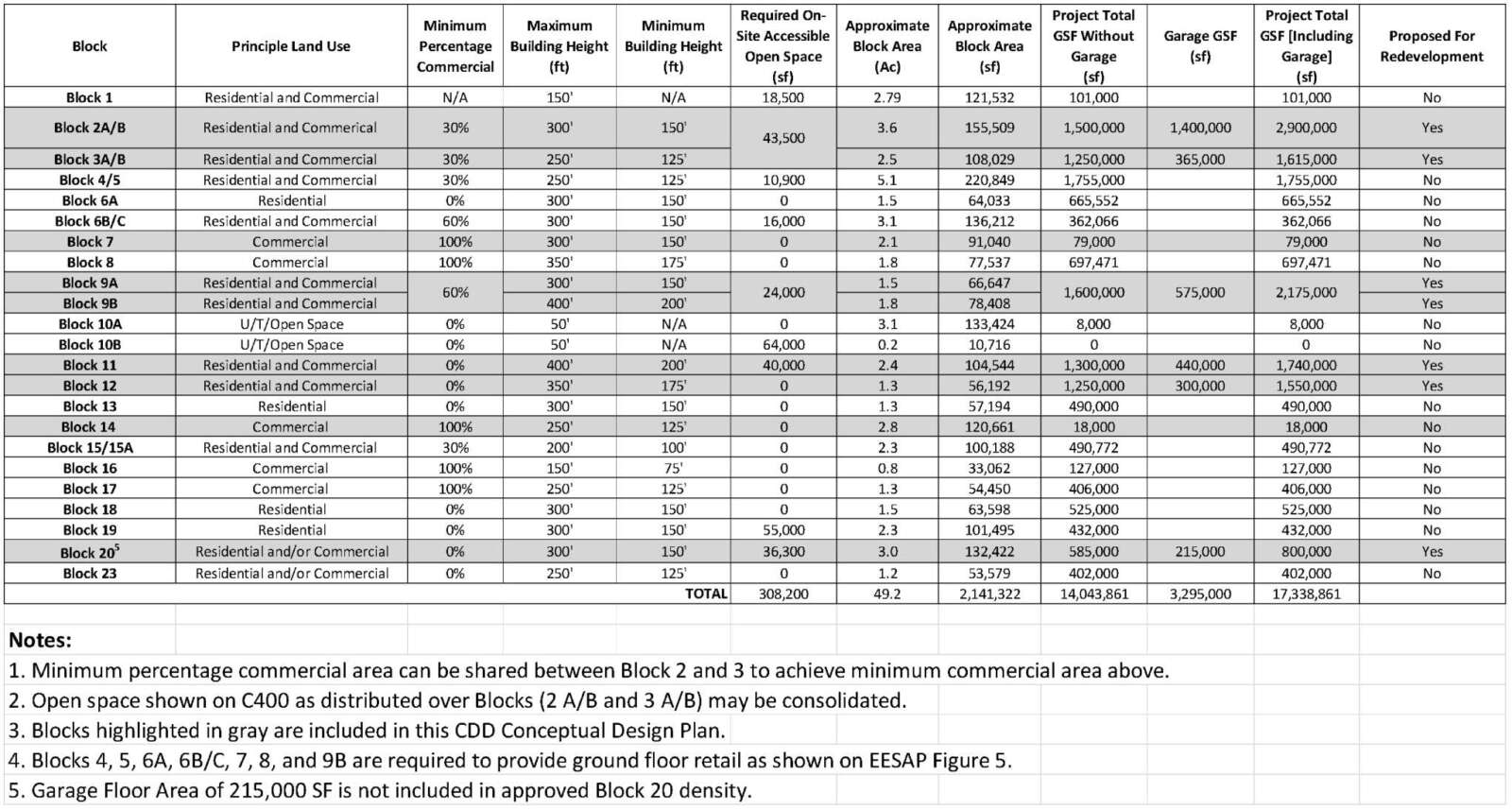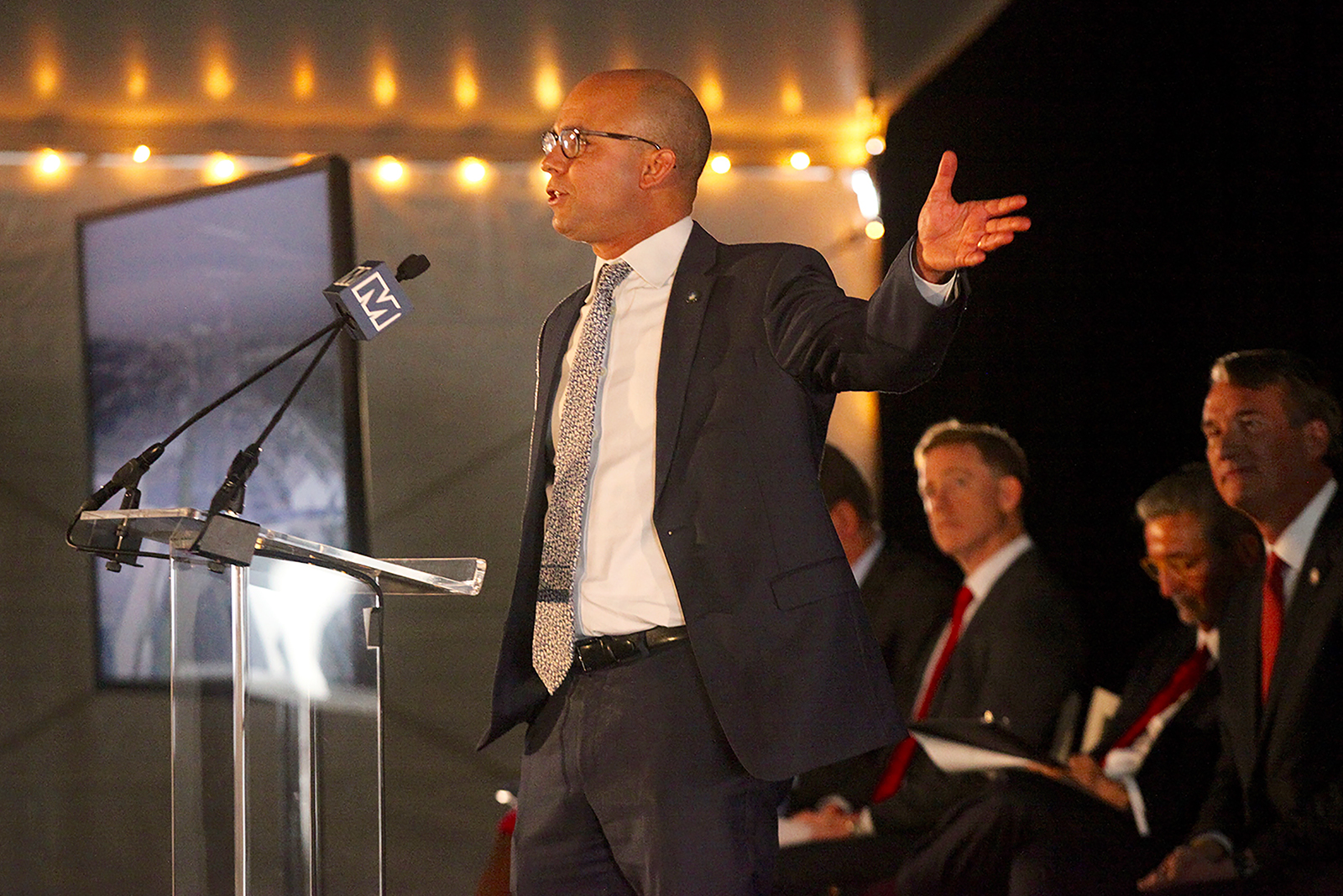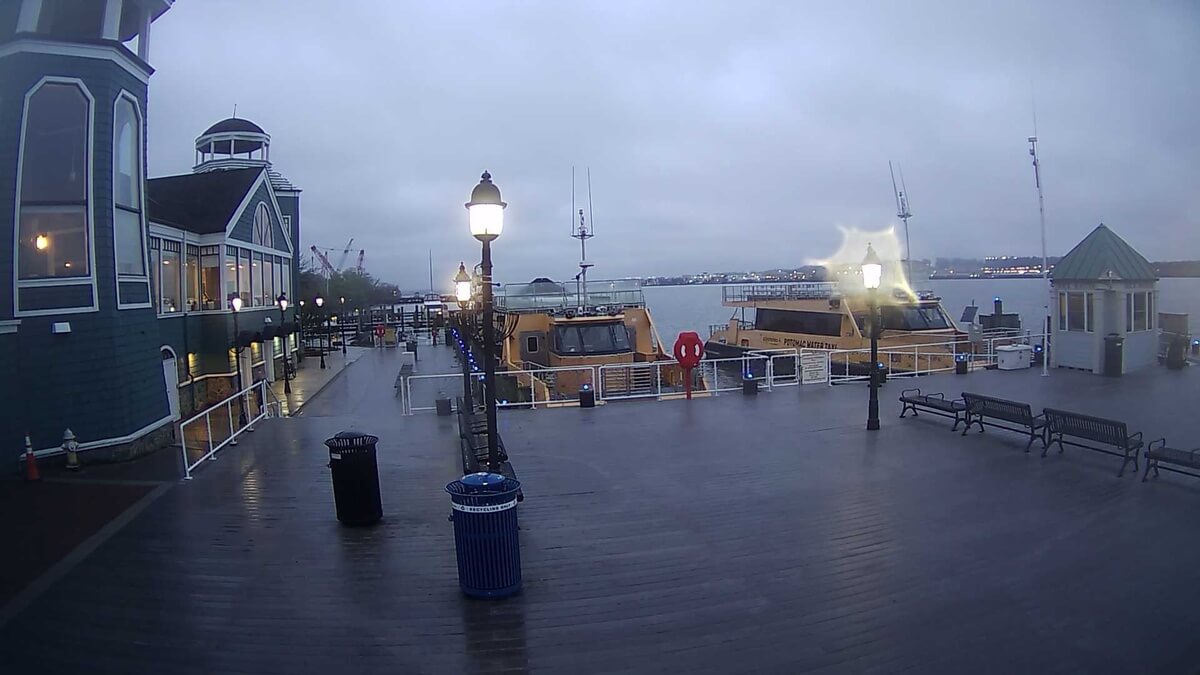
It was another busy week in Alexandria.
This week’s top stories focused on development projects all over the city, from Old Town North to Carlyle and in the West End. News of the mixed-use projects comes as affordable housing advocates are protesting against being priced out and are asking for greater assistance from the city.
Politics-wise, City Council Member Alyia Gaskins celebrated two recent victories in her Democratic primary race for mayor. Gaskins is leading with fundraising, having raised $149,107 with $69,425 on-hand, according to quarterly campaign finance reports released Monday. Her opponent Vice Mayor Amy Jackson has raised $59,984 and has $22,682 on-hand, while former real estate developer Steven Peterson has raised $44,700 with $14,019 on-hand.
Gaskins also handily won the recent Alexandria Democratic Committee’s Straw Poll by 81%, followed by 16% for Jackson and 3% for Peterson. The primary is on June 18.
On Tuesday, we reported on a new movement to return Alexandria’s City Council to ward/district representation. While the nine-member Alexandria School Board is divided into three districts, the seven members of City Council are at-large, representing the entire city. The Communities for Accountable City Council is a self-described non-partisan group of city residents “exasperated with the intransigent Alexandria City Council that is unaccountable to communities and neighborhoods because of Alexandria’s At-Large election system.”
In our poll this week we asked whether City Council should return to a ward system. Out of the more than 500 votes, 57% voted yes and 43% voted no.
The most-read stories this week were:
- Notes: Old Town North building sold for $15.4 million to be turned into mixed-use apartment building (8413 views)
- Alexandria considering big plans for properties next to Eisenhower Avenue Metro station (4987 views)
- Alexandria City Council approves new ‘neighborhood’ at former Vulcan Materials site (4603 views)
- CVS set to close in Taylor Run neighborhood on Duke Street (3611 views)
- Affordable housing advocates rally outside Alexandria City Hall (3559 views)
- No arrest after fistfight leads to gunfire in Lincolnia (3351 views)
- Notes: Fundraiser for motorcyclist killed on Duke Street raises thousands (2390 views)
- Local organization forms to push Alexandria back to district/ward elections (2303 views)
- Mystic BBQ & Grill opens on Lee Street in Old Town (2235 views)
Have a safe weekend!
New parks, 400-foot-tall commercial and residential buildings and more.
The Hoffman family and its associates have a comprehensive idea for the future of the 79-acre site next door to the Eisenhower Avenue Metro station in Alexandria’s Carlyle neighborhood.
The collection of vacant properties are located in and around the Hoffman Town Center, home to the National Science Foundation, a popular movie theater, a Wegmans grocery store, as well as a number of large apartment buildings.
Hoffman, its affiliates and Arlington-based Paradigm Companies will present their coordinated development district (CDD) conceptualization design plan to the Planning Commission at City Hall (301 King Street) on June 4.
Hoffman and Paradigm are proposing the eventual development of multiple apartment buildings up to 400-feet tall, commercial buildings up to 300-feet tall, as well as space for a new school, a new city park, walking trails, a dog park, and tennis and basketball courts.
The 20-page document is a framework for future development, where property boundaries for individual blocks are outlined, and so are building heights, streetscape designs and expected uses, such as open space areas.
As far as a timeline, the developers said in their application that phased development “can occur at any order and is subject to change,” and that uses for the underdeveloped blocks could include vehicle parking, material storage, city agency training, a farmer’s market, festival space, a beer garden and “other similar uses approved by the city.”
Paradigm owns the 24-story Parc Meridian at Eisenhower Station apartment building (750 Port Street), the dual-tower Carlyle Place apartment building (2251 Eisenhower Avenue) and well as the unfinished 26-story Meridian 2250 apartment building project (2250 Dock Lane). Hoffman owns seven blocks within the property.
The site has contaminated soil. According to Hoffman and Paradigm:
To the best of our knowledge contaminated soil may be on site… Based on environmental investigations, Block 2 contains arsenic and has high total chromium levels. Block 3 contains arsenic, petroleum hydrocarbons and chlorinated solvents. Additional investigations will be completed with each DSUP (development special use permit) when a block moves forward with redevelopment.

After years of planning, a new neighborhood was just approved to replace the former Vulcan Materials site in Alexandria’s West End.
City Council approved the proposal 5-1 at their Saturday public hearing, with City Council Member Canek Aguirre voting in opposition.
Lennar Corporation and Potomac Land Group II LLC can now build a dual-branded 11-story hotel with 256 rooms facing S. Van Dorn Street on at 701 S. Van Dorn Street and 698 Burnside Place, as well as condominiums, townhouses and a new public park. Renderings of the hotel revealed a Hilton Garden Inn and Homewood Suites.
The group also plans to contribute $3.5 million into the city’s Affordable Housing Trust Fund instead of including affordable housing on the 18-acre site. Additionally, $2.6 million would go toward construction of the 4.4-acre Backlick Run Park in the northwest corner of the property, and the developers would also build a pedestrian bridge from the property to the park.
Aguirre said that the project is an island without affordable housing, and said that the plan does not create a new voting precinct, or a school, and is difficult for the community to otherwise access.
“This is acres and acres of land,” Aguirre said. “We don’t get an opportunity to deal with this much land like this, and to say that we’re gonna have this large of a site and not have anything affordable, I don’t know how we do that.”
The site is the former home to a gravel and granite processing site, and is approximately a half-mile from the Van Dorn Metro station. About one-third of the property can’t be developed due to its previous industrial use.
Mayor Justin Wilson said that the city can’t always get what it wants, especially with such an industrial parcel of land.
“We want to do it all,” Wilson said. “We want public art, we want open space, we want affordable housing. We want it all and the reality is that it all does not pencil out.”
Ken Wire represents the developers and told Council that it will take a year to do environmental cleanup on the property and three years before housing units can be sold.
The plan also calls for construction of 204 condominiums, 88 back-to-back multifamily units, and 31 townhomes connected on an internal street network. Wire said that the condos would range in price from $400,000 to $600,000.
Good Wednesday morning, Alexandria!
🌧️ Today’s weather: Expect showers between 9am and 3pm, with increasing clouds and a high near 72°F. South wind will be 6-8 mph and a 40% chance of precipitation. On Wednesday night, showers and thunderstorms, mainly before 11pm, with a low around 59°F. Southeast wind around 6mph will become northwest after midnight, with a 60% chance of precipitation. New rainfall of less than a tenth of an inch is expected, while higher amounts are possible in thunderstorms.
🚨 You need to know

An Old Town North property was officially sold in February, and its new owner plans to start construction of an eight-story mixed-use building with 250 multifamily units, an underground parking garage, a restaurant and an arts/cultural anchor on the ground floor, according to the Washington Business Journal.
The property was bought by an affiliate of Carr Properties in February for $15.4 million, according to city property records. The owner is named 901 N. Pitt Street, LLC, which is a mix of The Oliver Carr Company and Carr Holdings II LLC, and the company was granted a special use permit to develop on the property in 2022.
The building on the 69,000 square-foot property was built in the 1980s, and the new building would grow to 250,000 square feet. One tenant, nonprofit dance studio CityDance has signed a lease for space in the building, according to the Washington Business Journal. Additionally, Carr Properties is developing the project with SK+I Architecture and interior designer Streetsense LLC.
📈 Tuesday’s most read
The following are the most-read ALXnow articles for Apr 16, 2024.
- Man held without bond after dog allegedly executed in West End apartment (1121 views)
- One-third of Alexandria’s workforce works from home (923 views)
- Local organization forms to push Alexandria back to district/ward elections (686 views)
📅 Upcoming events
Here is what’s going on today in Alexandria, from our event calendar.
- 1:00 pm: The Caregiver | Caregiving Workshop
- 👉 5:00 pm: Vintage Night Market
- 5:30 pm: Meet the AWLA & Adoptable Animals
It’s not as exciting as the Washington Wizards and Capitals, but Amazon Fresh in the Potomac Yard Shopping Center is still moving forward.
The Washington Business Journal first reported that Amazon is gearing up to open at 3801 Richmond Highway.
A peek through a window at the former Shoppers Food Warehouse reveals a large grocery store with empty shelves and counters. A Virginia Alcohol Beverage Control license application is also posted on the front door showing that the retail giant applied in February to sell gourmet wine and beer.
The Washington Business Journal also found recent permit applications for the installation of refrigeration cases.
Property owner JBG Smith lists the property as a “Future Grocer.” As a policy, Amazon does not comment on its “future store roadmap.”
Amazon Fresh closed earlier this month in Crystal City, ARLnow reported. The store was open for less than two years. The company also abandoned plans to open locations in Columbia Pike and Bailey’s Crossroads after a fourth quarter earnings call in February put a halt to expansion plans.
The Shoppers in Potomac Yard closed at the end of 2019 and Amazon Fresh was announced to go into the space in 2021. It’s located in the northern section of Potomac Yard near the Virginia Tech Innovation Campus and less than two miles from Amazon’s HQ2 development in Crystal City.
A developer has filed for a permit to redevelop 6101 and 6125 Stevenson Avenue, currently an office building and parking lot in the Landmark neighborhood, into a seven-story residential building.
The proposal is to build 270 units in the new building with 340 parking spaces in a garage, a ground-floor lobby and amenity space.
The development requires a special use permit to increase the height of the proposed building to 85 feet and an increase in the floor area ratio.
According to the application:
Overall, the Applicant is improving the Property by replacing the aging office building with an urban multi-unit building that will provide much-needed housing stock in the region. The proposed redevelopment will also reduce the number of curb cuts from three to two, achieve desirable density that is appropriate in the surrounding context, improve the Stevenson Avenue streetscape, and create affordable housing to serve the local community.
The development plans will create 26 units considered affordable at up to 60% of area median income for 40 years. The application said the units will consist of 17 one-bedroom units and 9 two-bedroom units. The developer will also provide a $433,962 contribution to the Housing Trust Fund.
The project is scheduled for review at the Planning Commission on June 4.
The Potomac Yard arena’s demise has been met by mixed emotions from public officials, and even landowner JBG Smith.
Now that the Washington Wizards and Capitals are definitely not coming to Alexandria and will stay in D.C., a proverbial question mark looms over the 12-acre property.
JBG Smith released a scathing message after Alexandria backed out of the deal on March 27, and then lightened up in a recent interview with the Washington Business Journal. Now CEO Matt Kelly says that the Virginia Tech Innovation Campus will be the anchor for the area, and that with Amazon HQ2 nearby in Crystal City, Potomac Yard will become a tech corridor.
Mayor Justin Wilson said that the economic benefits of the arena and entertainment district could have funded a number of city priorities, including a potential reduction of personal property taxes for residents. He wasn’t so optimistic on the future of the property, and called the city leaving the deal “perhaps the most negative financial event for our schools, public safety and human services in recent history.”
“Regardless of your perspective on the North Potomac Yard proposal, it held the potential to dramatically reshape Alexandria’s economy, easing the burden on our residential taxpayers and enabling expanded investment in critical services to our residents, as well as yielding new land for a school, open space and committed affordable housing,” Wilson wrote in his April newsletter.
The initial agreement was hailed by Republican Governor Glen Youngkin as a once-in-a-lifetime opportunity, and it was vigorously supported by Wilson and Ted Leonsis, the billionaire owner of both teams.
News of the proposal broke on Dec. 13, surprising even D.C. Mayor Muriel Bowser, who was in the midst of negotiating with Leonsis to keep both teams at the Capital One Arena. Youngkin proudly announced the deal onstage at Potomac Yard, flanked by U.S. Sen. Mark Warner (D), Leonsis, Kelly, Stephanie Landrum of the Alexandria Economic Development Partnership and the entire City Council.
But the sudden nature of the deal, as well as a short, three-month public relations campaign by the city and Monumental Sports, had little effect in Richmond. A House of Delegates bill establishing a stadium authority to issue $1.5 billion in taxpayer-funded bonds was stopped in the Senate Appropriations Committee by Sen. Louis Lucas (D-18), and the city left the negotiating table on March 27.
Leonsis has since turned back to D.C., where both teams will likely remain for decades.
The Coalition to Stop the Arena at Potomac Yard loudly protested the project.
“Economic development that benefits all residents of Alexandria and the Commonwealth can only happen with transparent input from the citizens who will be affected,” said Andrew Macdonald, a former Alexandria vice mayor and co-founder of the Coalition. “Backroom deals negotiated in secret and sprung on the citizens at the last minute must not be standard operating procedure in Alexandria or anywhere else ever again.”
Happy Thursday, Alexandria!
⛈️ Today’s weather: Expect isolated showers between 11 a.m. and 2 p.m., followed by scattered showers and thunderstorms that could produce small hail. The day should be partly sunny with a high temperature near 57. Tonight, there’s a 30% chance of isolated showers between 8 and 11 p.m., with a low temperature of 39.
🚨 You need to know

What’s going to happen with the 12-acre property at Potomac Yard since the arena and entertainment district plans evaporated?
In an exclusive interview with the Washington Business Journal, Matt Kelly, the CEO for landowner JBG Smith, said that he doesn’t know exactly what will go into the space now, but that the arena deal highlighted the “attractiveness” of the property, which is next door to the Potomac Yard Metro station.
Kelly’s statements follow a scathing condemnation from the company immediately after the deal officially died.
Kelly said that JBG Smith’s 2020 plans to build six office buildings with ground floor retail on the arena will likely be scrapped due to a dwindling office market. He also said that Virginia Tech’s Innovation Campus and Amazon’s HQ2 in Crystal City will open opportunities for “tech uses” in the space.
The statement contradicts a more dire message from Mayor Justin Wilson, who recently wrote in his April newsletter that the arena failure will likely result in a period of stagnation for the property.

In the wake of Alexandria backing out of the $2 billion Potomac Yard arena deal, Mayor Justin Wilson says that “very little will likely change in North Potomac Yard for quite some time.”
In his April newsletter, Wilson said that last week’s announcement that the city was leaving the negotiating table signaled “perhaps the most negative financial event for our schools, public safety and human services in recent history.”
The implosion of the arena deal marked the end of more than three months of negotiations between Washington Wizards and Capitals owner Ted Leonsis, Governor Glenn Youngkin, the Virginia General Assembly and the city. A House of Delegates bill creating a Virginia Stadium Authority to own the arena and issue bonds never got out of the Senate Appropriations Committee, and was never included in the legislature’s budget.
Now, with the city out of the deal, Leonsis is back in D.C. with a deal that will keep his teams playing at the Capital One Arena until at least 2050.
Wilson said that, if property taxes are to be lowered for residents in the future, the city needs to look elsewhere for large-scale developments.
“Regardless of your perspective on the North Potomac Yard proposal, it held the potential to dramatically reshape Alexandria’s economy, easing the burden on our residential taxpayers and enabling expanded investment in critical services to our residents, as well as yielding new land for a school, open space and committed affordable housing,” Wilson wrote.
Wilson’s full message is below:
Alexandria City Council members and candidates are opening up about their positions on the city backing out of the Potomac Yard arena deal.
Mayor Justin Wilson said that the city will be spending a lot of time unpacking what led to the announcement that it was backing out of a plan to move the Washington Wizards and Capitals from D.C. to a new arena with an entertainment district in the city’s Potomac Yard neighborhood.
The deal is now a historic defeat, joining the failed attempt in the 1990s to build a stadium for the Washington Redskins (now Washington Commanders) at Potomac Yard.
“We’ll spend some time unpacking all of this,” Wilson told ALXnow. “But in the end, this proposal got caught up in some powerful politics in Richmond. Now, as a result of those very same politics, some very significant priorities of Alexandria are very vulnerable in Richmond. That’s a shame.”
Wilson said those components of the state budget include funding for the Washington Metropolitan Area Transit Authority, education and public safety. Wilson was enthusiastic about the deal since it was announced Dec. 13, remaining steadfast in his support of its economic potential until yesterday’s announcement. Wilson is currently vacationing with his family and has been responding to the situation from Greece.
“Gun legislation has already been vetoed, and I imagine many, many vetoes to go,” Wilson said.
All of City Council sat on stage alongside Wilson, Governor Glenn Youngkin and Monumental Sports & Entertainment owner Ted Leonsis at the surprise announcement on Dec. 13 in Potomac Yard. Youngkin characterized the move as a once-in-a-lifetime opportunity, wanting the arena to open next door to the Potomac Yard Metro station in 2028.
The $2 billion project stalled in the Democrat-controlled Virginia State Senate, held up by Senate Appropriations Committee Chair Sen. Louise Lucas, who refused to include it in the state budget. This week, Lucas said that Leonsis could pay for the entire project himself instead of relying on $1.5 billion in bond financing from Virginia taxpayers.
Former Alexandria Mayor Allison Silberberg joined the Coalition to Stop the Arena at Potomac Yard in Richmond to protest the move during the General Assembly’s session earlier this month. She said that the city backing out of the deal was a great relief.
“The financial risks were terrible for the Commonwealth and our city, as well as the traffic impacts that would have overwhelmed our city over 275 nights a year,” Silberberg said. “I hope the city will now focus its economic development vision on more compatible uses for this property. As I have said often since 2018, I envision a tech corridor with the Virginia Tech Innovation Campus as the anchor and catalyst in addition to mixed use development.”



